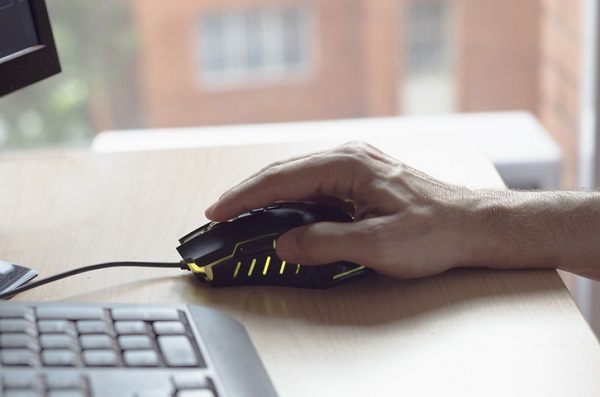Improving User Interface Devices in Radiology

Like many of you reading this column, I spend a lot of time at a computer. At work, a significant amount of my day is spent using PACS and other workstations. Sometimes, I think about minor frustrations associated with PACS and the number of clicks I need to make just to get something done. An example of a minor frustration would be that to use the measurement tool with my mouse, I have to right click, navigate into a dropdown menu, select through a submenu, and then left click.
You might say to this, “Just assign a keyboard shortcut,” and I did — but this still requires a maneuver with my other hand. You might also say, “Are you the only person that cares about this?” and I would say, “No.”1,2,3
Sometimes, I am dictating and would rather not interrupt my workflow to activate a tool, or preset window/level combination with my other hand while navigating PACS with my mouse. All of this may sound nerdy or whiny, but it does play an important part in my daily workflow.
To temporarily solve some of these minor issues, I decided to purchase a programmable mouse. Our PACS at most hospitals restricts the installation of device drivers for peripherals, so the mouse would have to have programming stored on the device itself for plug-and-play functionality. I previously tried a few “high-end” mice of graphics designer friends, and decided to invest in a fancy, expensive mouse to use at home and assign some functions for use at work on PACS. It is an extremely comfortable mouse to use at home or in the office workplace, but I was not as impressed with its usability for PACS. It also comes with a heavy price tag for a computer peripheral. Now before you roll your eyes and say, “Is this an Amazon review in the ACR RFS blog?” let me tell you that certainly is not my intent.
A day later, I purchased a cheaper, off-brand programmable gaming mouse meant for playing massively multiplayer online role-playing games. I am only a casual gamer, so I have never needed or used a mouse like the one I had just purchased. It has 12 buttons in a 3x4 array in the region where your thumb buttons normally would be. I assigned 6 of the buttons to common window/level combinations that I use on a daily basis (abdomen, lung, bone, liver, head, and sinus), 6 buttons to common functions (measure, arrow, elliptical ROI, invert image, vertebral labeling, and image reset), and one button on the top face of the mouse for activating the zoom function. There are adjustable dots per inch settings for finer or broader movements. This relatively cheap device met the requirements of having the programmed functions stored on the mouse’s on-board memory and did not install any drivers on the PACS workstations. For the price, I was wholeheartedly expecting the device to die within the first hour of use, generate errors, or for the extra functionality not to work at all. To my surprise, the mouse function was excellent, and after a short learning curve to train the muscle memory of the mouse functions, I found this device to vastly improve the usability of PACS.
Improvements of user interface devices in radiology has been studied before, but I am thinking about conducting a study in our department. Have any of you studied, or used programmable gaming mice or non-standard devices in your departments? Tell me what you think by contacting me on ACR Engage or by email at mohan.tp2@gmail.com.
ENDNOTES
- Denton. Of Mice and Roentgen: Radiologist Satisfaction with a Non-conventional 13-Button Mouse-One Institution’s Experience. J Digit Imaging. 2018.
- Weiss. Radiologist Assessment of PACS User Interface Devices. J Am Coll Radiol. 2006.
- Liden. Alternative User Interface Devices for Improved Navigation of CT Datasets. J Digit Imaging. 2011.
Suggested Reading:
- Sharma. Radiologist Digital Workspace Use and Preference: a Survey-Based Study. J Digit Imaging. 2017.
- Lee. Radiology Workflow Dynamics: How Workflow Patterns Impact Radiologist Perceptions of Workplace Satisfaction. Acad Radiol. 2017.
- Iannessi. A review of existing and potential computer user interfaces for modern radiology. Insights Imaging. 2018.
- Goyal. Ergonomics in radiology. Clinical Radiology. 2009.